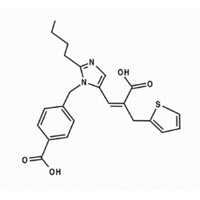Many patients with hypertension must use more than one antihypertensive medication to achieve blood pressure control. Drug interactions are possible, especially when patients require medications for other conditions. Flockhart and Tanus-Santos reviewed the drug metabolic effects caused by interactions with the cytochrome P450 microsomal enzyme system in the liver.
Researchers have identified specific isoforms of this system that are involved in drug metabolism. Despite some individual variations based on genetic polymorphisms in some isoforms, certain interactions can be predicted. For example, quinidine and diphenhydramine inhibit the CYP2D6 isoform, thereby inhibiting the metabolism of beta-blockers and prolonging negative chronotropic and inotropic effects. Antihypertensive agents also may interact with each other. For instance, the combination of verapamil and metoprolol decreases the systemic clearance of verapamil while increasing the bioavailability of metoprolol. Water-soluble beta blockers that are not metabolized in the liver, such as sotalol, nadolol, and atenolol, are less likely to be affected by these metabolic drug interactions.
Inhibitors of CYP3A4, such as the azole antifungal agents ketoconazole and itraconazole, can increase the effects of calcium channel blockers and lead to hypotension. Cimetidine, another CYP3A4 inhibitor, increases the bioavailability of nifedipine. Grapefruit juice also down-regulates CYP3A4 in the small-intestine wall, which can result in large increases in the bioavailability of felodipine and nisoldipine, and smaller increases in the bioavailability of nifedipine and verapamil. Patients taking medications that would be increased in concentration by inhibitors of CYP3A4 metabolism should avoid grapefruit juice.
Although angiotensin-converting enzyme inhibitors are partially metabolized in the CYP3A4 system, they are not significantly involved in P450 interactions. Angiotensin II receptor blockers, especially losartan and irbesartan, are metabolized largely by the CYP2C9 system. These medications demonstrate increased bioavailability when given with ketoconazole, a CYP2C9 system inhibitor, and decreased bioavailability when given with rifampin, a CYP2C9 activator. Valsartan, eprosartan, and candesartan are not metabolized by the cytochrome P450 system and, therefore, are not affected by system induction or inhibition.
Hydrochlorothiazide and furosemide have no significant interaction with the cytochrome P450 system. Alpha receptor blockers such as prazosin and clonidine are metabolized by the liver but do not seem to interact with other drugs through the cytochrome P450 mechanism.
The authors conclude that understanding the cytochrome P450 enzyme system and the specific isoforms involved in drug metabolism should help physicians avoid potentially harmful drug interactions. Better characterization of drug metabolic profiles will allow for the prediction of potentially problematic drug interactions.
COPYRIGHT 2002 American Academy of Family Physicians
COPYRIGHT 2002 Gale Group



